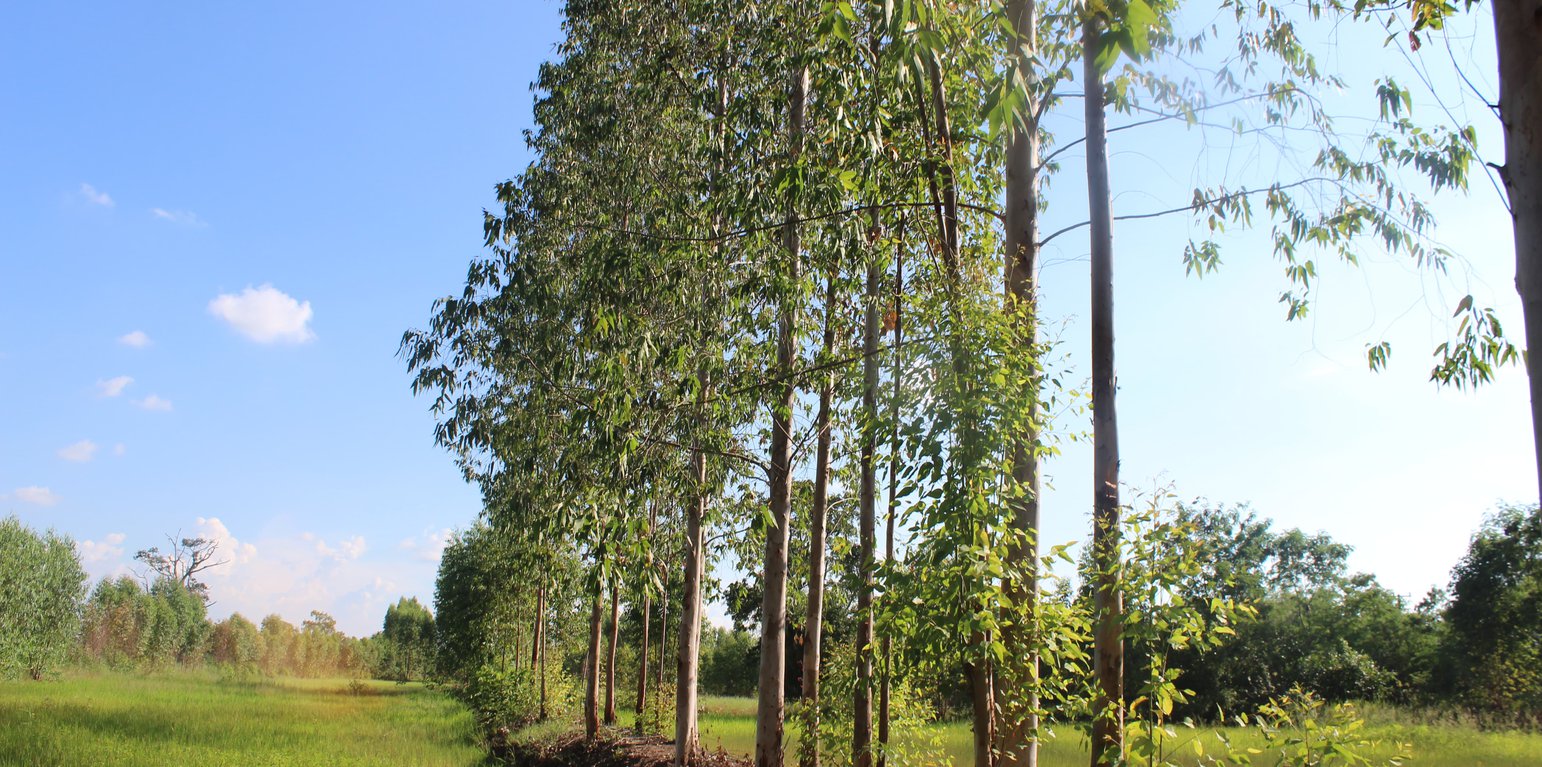



Eucalyptus camaldulensis cultivation on rice bunds to lower shallow saline groundwater levels in low-lying areas is a technology used on salt-affected land. The LDD Perennial Tree Planting project to promote the technology of planting Eucalyptus camaldulensis on rice bunds has been implemented since 1996. The land user interviewed cultivates a moderately salt-affected rice field at Ban Muang Pia District, Khon Kaen Province. The land is used for rice production both glutinous (variety RD 6) and non-glutinous fragrant rice (Hom Mali 105). The average yield of rice is 200-250 kg/rai (1 ha = 6.25 rai). The farmers have planted eucalyptus on bunds in the rice cultivated areas on about 10,000 rai in more than 10 years with the objectives of remedying and preventing salination by lowering shallow saline groundwater levels, through "bio-drainage" as well as increasing income and better utilization of lands on rice bunds for growing trees.
The technology of eucalyptus cultivation on rice bunds has been implemented in farmers' fields in the low-lying salt-affected rice area common in the Northeast of Thailand. It is widely accepted by farmers through the joint partnership between the Land Development Department (LDD), Siam Forestry Co., Ltd. and the local district administration. Eucalyptus seedlings are provided by LDD and are planted in a single or double rows - double rows with trees planted on two sides of the rice bunds in a zigzag manner following an east-west direction to prohibit a shadow effect. The spacing between the trees in a row is 2 m: the rice bund was adapted to be 1.5 m wide and 0.5 m high. This provides more space and convenient access to the rice field. The project provides labour costs for farmers to prepare the land before planting. Many farmers outside the project transplanted their own eucalyptus seedlings on the bunds of 0.5 m or more in width. Farmers buy the seedlings at 1 THB each and plant in pits of 0.3 x 0.3 x 0.3 m with 0.5 kg compost and 0.5 kg rice husks from farm by-products. This technology is well accepted by farmers because of the effective control of salinity in the rice fields as well as the higher income obtained from selling eucalyptus wood. Farmers observed the dead patchy spots of rice plants with salt crusts before planting eucalyptus: after 2 cutting cycles no salt patches were observed anymore, and rice yields increased noticeably. There was also extra income from selling poles of eucalyptus every 4 years. The average yield of eucalyptus trees of 2.5-3.0 inches in diameter was 16 tons per rai for the first cutting.
Based on 7 years (2 crops of eucalyptus coppicing), the average additional income was 1,087 THB/rai/yr (according to the farmers' and Siam Forest's information). The main investment was in the first year of planting; later on, the maintenance cost was on labour for weeding, pruning and thinning to 3 stems after coppice/cutting, including adding 15-15-15 fertilizer for each tree. The average income is increased through better rice yields. The benefits of the technology according to interviews are creating a cooler microclimate from eucalyptus trees and changes in biodiversity through better soil quality resulting in more species of flora and fauna such as grasses, wildflowers, dragonflies, earthworms in the rice field and on the bund. Some farmers wanted more trees by planting at closer spacing of 1 m, but this resulted in too great a density of trees thus consuming more surface water and competing with rice for water consumptive use.
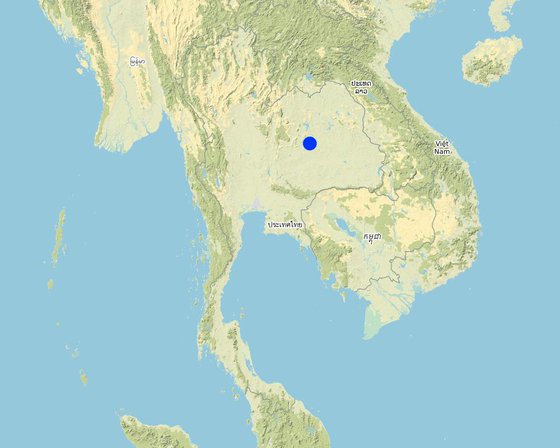
地点: Ban Phai, Khon Kaen, 泰国
分析的技术场所数量: 单一场所
技术传播: 均匀地分布在一个区域 (approx. 1-10 平方千米)
实施日期: 1996
介绍类型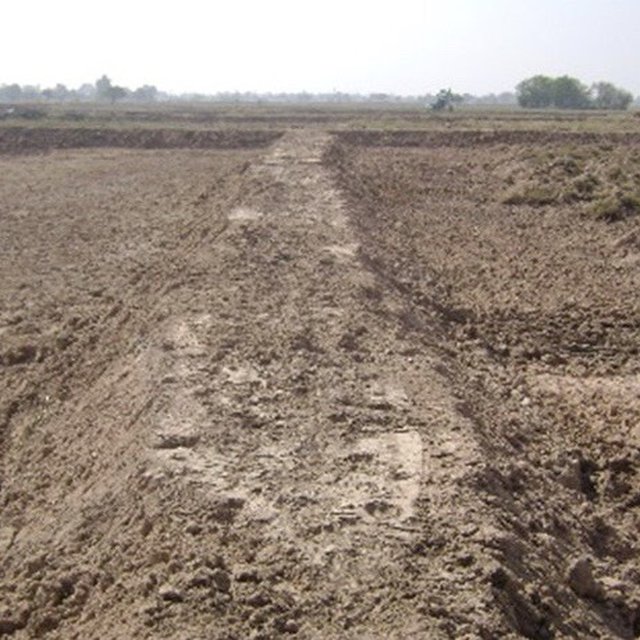
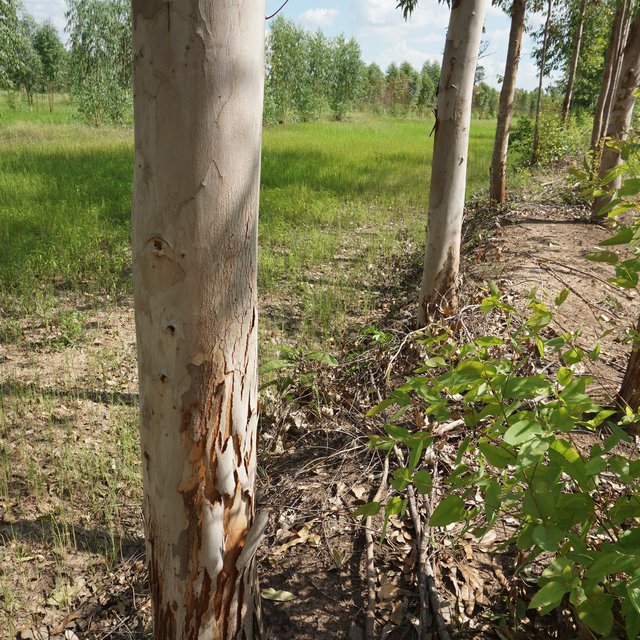







技术规范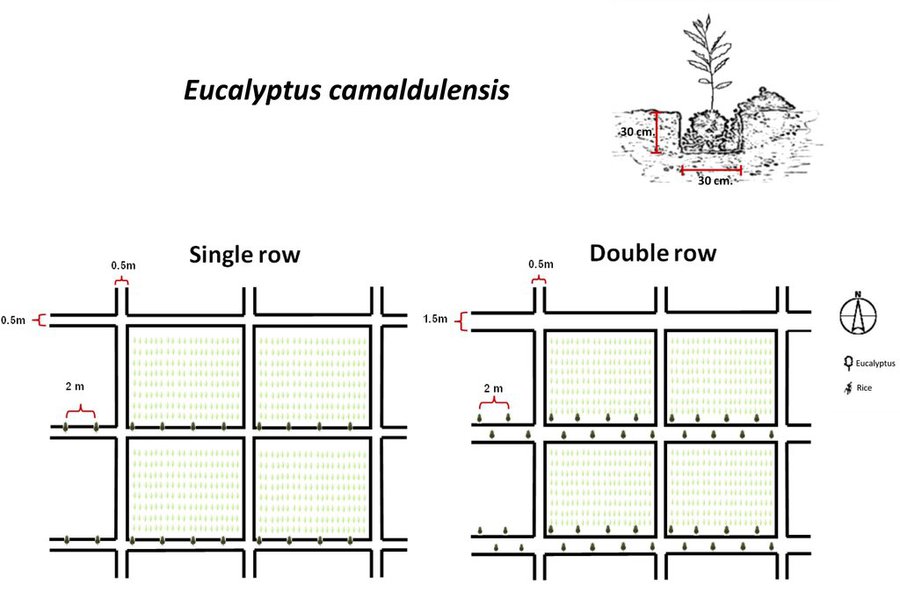
作者:Chettaruj Janplang
1. Seedling of Eucalyptus camaldulensis H4, a salt-tolerant variety, were planted. The age of seedlings was 3-month old. The rice bund was regulated to 0.5 m wide for planting eucalyptus in single row or 1.5 m wide for planting in double rows (in a zigzag manner), 0.5 m high with a spacing of 2 m between the trees along an east-west direction. The number of trees was 80/rai or 500/ha for double rows planting.
2. Planting technique: 0.5 kg of compost mixed with 0.5 kg of rice husks was applied at the bottom of a pit of 0.3 x 0.3 x 0.3 m before seedlings were planted. |
|||||||||||
| 对投入进行具体说明 | 单位 | 数量 | 单位成本 (THB) | 每项投入的总成本 (THB) | 土地使用者承担的成本% |
| 劳动力 | |||||
| Labour cost for planting eucalyptus (labour wage per day = 300 THB, 1 rai required a labour cost of 600 THB) | Rai | 1.0 | 600.0 | 600.0 | |
| 植物材料 | |||||
| Eucalyptus seedling cost (80 trees/rai), 1 THB for each seedling | Seedling | 80.0 | 1.0 | 80.0 | |
| 肥料和杀菌剂 | |||||
| Compost cost 3.5 THB/kg, 0.5 kg/pit | kg | 40.0 | 3.5 | 140.0 | |
| Rice husk cost 4 THB/kg, 0.5 kg/pit | kg | 40.0 | 4.0 | 160.0 | |
| 技术建立所需总成本 | 980.0 | ||||
| 对投入进行具体说明 | 单位 | 数量 | 单位成本 (THB) | 每项投入的总成本 (THB) | 土地使用者承担的成本% |
| 劳动力 | |||||
| Labour cost of weeding, pruning, thinning, and fertilizer application for 150 THB/time, 2 times/rai/yr, based on the labour wage of 300 THB/day | Time | 2.0 | 150.0 | 300.0 | |
| 肥料和杀菌剂 | |||||
| Cost of 15-15-15 chemical fertilizer (13 THB/kg, application rate 50 g/tree; 50 g x 80 trees per rai = 4 kg/rai | kg | 4.0 | 13.0 | 52.0 | |
| 技术维护所需总成本 | 352.0 | ||||
SLM之前的数量: Rice production before planting eucalyptus 150-200 kg/rai
SLM之后的数量: Rice production after planting eucalyptus 200-250 kg/rai
The increase in rice production was due to being less saline condition of the field.
SLM之前的数量: More unfilled grain of rice
SLM之后的数量: Less unfilled grain of rice
Increased about 10%
SLM之前的数量: Less stubble
SLM之后的数量: More stubble
Increased about 10%
SLM之前的数量: Only rice was grown before SLM
SLM之后的数量: Rice and Eucalyptus
Increased about 50%, Eucalyptus grown in east-west direction only.
SLM之前的数量: 0%
SLM之后的数量: 50%
Rice bunds were unused before planting eucalyptus.
SLM之前的数量: 0%
SLM之后的数量: 10%
Planting trees hinder access to the rice field.
SLM之前的数量: None
SLM之后的数量: No effect
From rain water
Depend upon rainfall
Depends upon rain water
No supplementary water available
Under rainfed only
Remain unchanged
SLM之前的数量: 0%
SLM之后的数量: 20%
Increased about 20% (the cost for planting trees in the first year and the maintenance cost of later years).
SLM之前的数量: 0
SLM之后的数量: Approximately 1,000 THB/rai/yr
Additional income from selling eucalyptus logs besides rice
SLM之前的数量: Income from only rice
SLM之后的数量: Income from both rice and logs
Extra income from selling swine and boar
SLM之前的数量: 0%
SLM之后的数量: 10%
Increased about 10% by planting tree and subsequent maintainence.
SLM之前的数量: 0%
SLM之后的数量: 10%
Self-sufficiency increased through obtaining higher income.
SLM之前的数量: 0%
SLM之后的数量: 10%
Change in microclimate affected in cooler atmosphere
SLM之前的数量: 0%
SLM之后的数量: 10%
Due to change in microclimate and biodiversity
SLM之前的数量: 0%
SLM之后的数量: 20%
More communication among land users community and local administration.
SLM之前的数量: 0%
SLM之后的数量: 10%
National institutions are more recognized by land users.
SLM之前的数量: 0%
SLM之后的数量: 50%
Land users observed less salination.
SLM之前的数量: 0%
SLM之后的数量: 10%
Saline groundwater level decreased due to the bio-drainage by eucalyptus trees.
SLM之前的数量: Ave. groundwater level < 1 m
SLM之后的数量: Ave. groundwater level > 1 m
Lower groundwater level after 7 years of planting eucalyptus
SLM之前的数量: 0%
SLM之后的数量: 10%
Cooler atmosphere
SLM之前的数量: 0%
SLM之后的数量: 10%
Due to shading
SLM之前的数量: 0%
SLM之后的数量: 10%
Shading effect and plant residues
SLM之前的数量: 0%
SLM之后的数量: 10%
Due to better soil properties from crop residues and earthworm activities
SLM之前的数量: 0%
SLM之后的数量: 10%
Due to better soil properties from crop residues and earthworm activities
SLM之前的数量: 0%
SLM之后的数量: 10%
SLM之前的数量: 0%
SLM之后的数量: 30%
Rice production as well as quality of rice increased (and also more percentage of full grains) due to the decrease in salinity level.
SLM之前的数量: 0%
SLM之后的数量: 50%
Rice bunds are used for planting eucalyptus only along east-west direction.
SLM之前的数量: 0%
SLM之后的数量: 80%
Biomass from eucalyptus trees
SLM之前的数量: 0%
SLM之后的数量: 60%
From eucalyptus trees and more local species of grasses and wildflowers
SLM之前的数量: 0%
SLM之后的数量: 50%
Earthworms, birds, rats, ants, etc.
SLM之前的数量: 0%
SLM之后的数量: 10%
Native earthworms
SLM之前的数量: 0%
SLM之后的数量: 20%
Dragonfly, earthworms, birds and rats
SLM之前的数量: 0%
SLM之后的数量: 10%
Due to cooler atmosphere of the planting sites
SLM之前的数量: 0%
SLM之后的数量: 20%
Eucalyptus trees absorb greenhouse gases.
SLM之前的数量: 0%
SLM之后的数量: 20%
Cooler and greener atmosphere
SLM之前的数量: 0%
SLM之后的数量: 10%
Reduced groundwater level
SLM之前的数量: 0%
SLM之后的数量: 10%
The planted Eucalyptus trees absorb greenhouse gases.